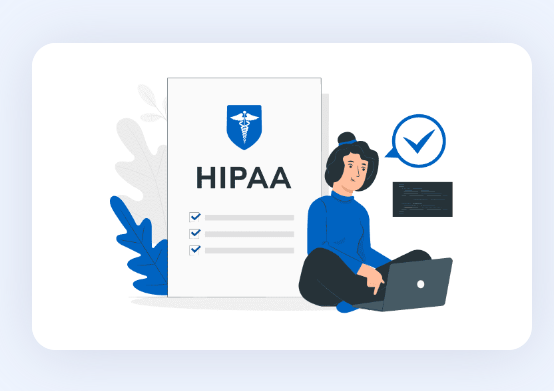Introduction:
Navigating the complex landscape of healthcare data security is no small feat. As technology evolves, so do the regulations, and one such crucial compliance standard is the cost of HIPAA compliance. In this guide, we will delve into various aspects, shedding light on the intricacies, challenges, and importance of maintaining HIPAA compliance.
Understanding the Basics
Cost of HIPAA Compliance: A Fundamental Overview
Ensuring compliance with the Health Insurance Portability and Accountability Act (HIPAA) is not merely a legal obligation but a necessity to safeguard sensitive patient information. The cost of HIPAA compliance involves various elements, including administrative, technical, and physical safeguards. This section will break down these components, offering a detailed understanding of the financial commitment required.
Administrative Safeguards
Navigating the Financial Landscape of Administrative Compliance
Administering HIPAA compliance involves establishing policies, procedures, and workforce training. This extends to managing security incidents, conducting risk assessments, and ensuring the appointment of a dedicated security officer. The financial investment in administrative safeguards is a critical aspect of the overall cost of HIPAA compliance.
Technical Safeguards
Investing in Technology for Data Security
The digital era necessitates robust technological solutions to protect electronic health information. Implementing access controls, encryption, and regular audits are integral to meeting technical safeguards. Here, we explore the financial implications of adopting and maintaining the necessary technology to fulfill HIPAA's technical requirements.
Physical Safeguards
Securing Physical Spaces for Data Protection
From controlled access to facilities housing patient information to the proper disposal of sensitive documents, physical safeguards are paramount. Understanding the fiscal aspects of securing physical spaces is crucial in comprehending the holistic cost of HIPAA compliance.
Challenges in HIPAA Compliance Costs
Navigating the Complexities: Unveiling the Challenges
While ensuring HIPAA compliance is non-negotiable, organizations often face challenges that contribute to the overall cost of HIPAA compliance. This section explores common hurdles, from evolving technology demands to adapting policies to meet ever-changing regulations.
The True Cost of Non-Compliance
A Costly Oversight: Consequences of Non-Compliance
Understanding the cost of HIPAA compliance is incomplete without acknowledging the repercussions of non-compliance. Fines, legal battles, and reputational damage can far exceed the initial investment in compliance measures. Here, we shed light on the potential financial fallout of neglecting HIPAA standards.
Strategies to Mitigate HIPAA Compliance Costs
Smart Investments for Long-Term Compliance
Mitigating the cost of HIPAA compliance involves strategic planning and forward-thinking. This section provides insights into cost-effective measures, leveraging technology, and proactive approaches to ensure sustained compliance without breaking the bank.
Cost of HIPAA Compliance: FAQs
Q: What factors contribute to the cost of HIPAA compliance? Understanding the cost of HIPAA compliance involves considering administrative, technical, and physical safeguards, alongside ongoing training and risk assessments.
Q: How frequently should organizations conduct risk assessments to manage compliance costs effectively? Regular risk assessments are vital. Conduct them annually and after significant changes in your infrastructure to stay ahead of compliance costs.
Q: Are there cost-effective technological solutions for small healthcare providers to ensure HIPAA compliance? Yes, various affordable options cater to the specific needs of smaller healthcare providers, making HIPAA compliance accessible.
Q: Can outsourcing certain aspects of compliance management reduce costs? Outsourcing can be a cost-effective strategy, particularly for smaller organizations. However, thorough vetting of service providers is crucial.
Q: How can organizations stay updated on evolving HIPAA regulations to avoid unforeseen compliance costs? Regularly monitoring official channels, participating in industry forums, and engaging with compliance experts are effective ways to stay informed.
Q: Is the initial investment in HIPAA compliance a one-time cost, or are there ongoing expenses? While the initial implementation involves significant costs, ongoing expenses for training, audits, and technology maintenance are necessary for sustained compliance.
Conclusion
In conclusion, understanding the cost of HIPAA compliance goes beyond financial figures. It's a commitment to safeguarding patient information, ensuring ethical practices, and fortifying the reputation of healthcare entities. By grasping the nuances, challenges, and strategies involved, organizations can navigate this landscape with confidence.
